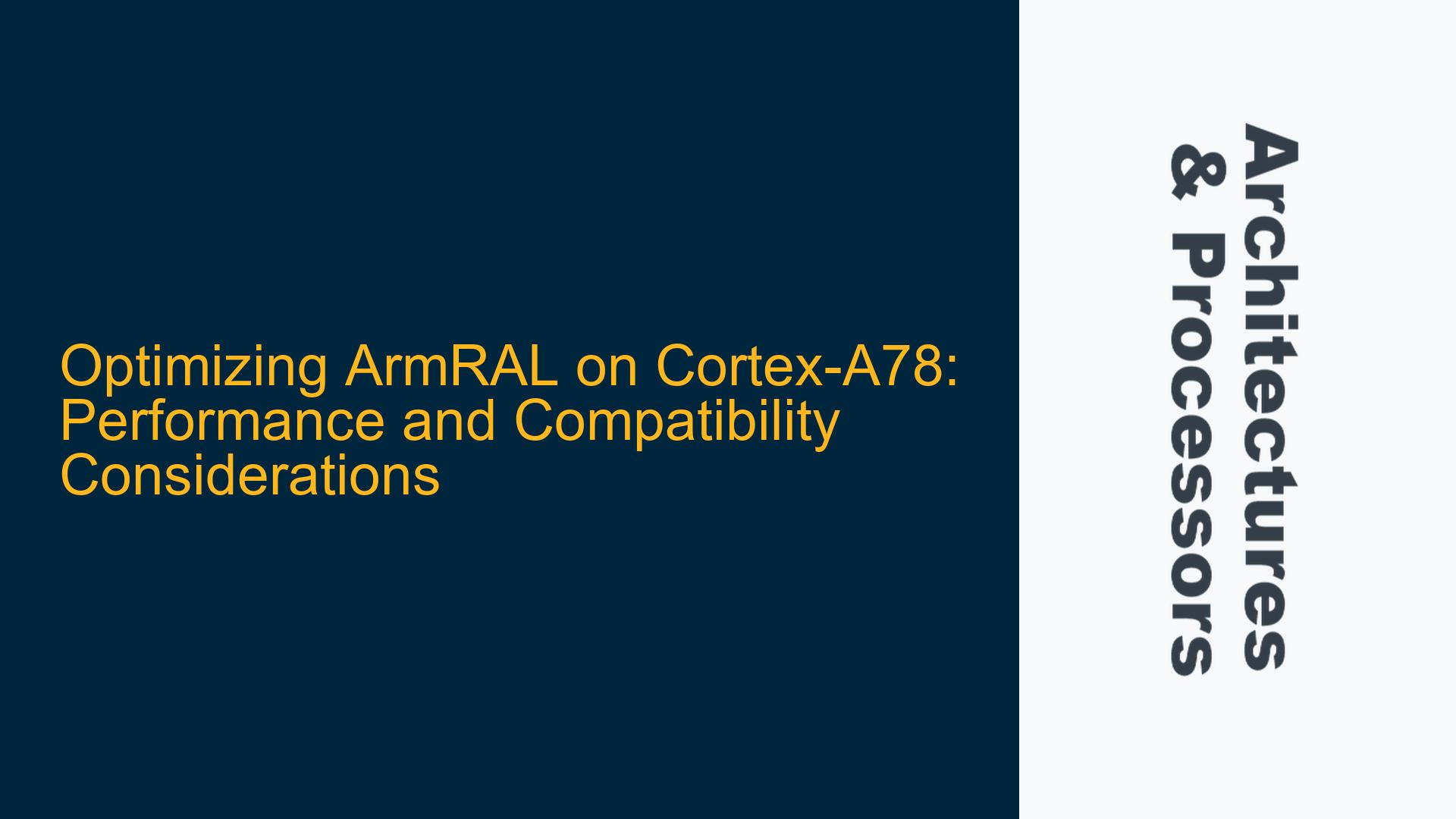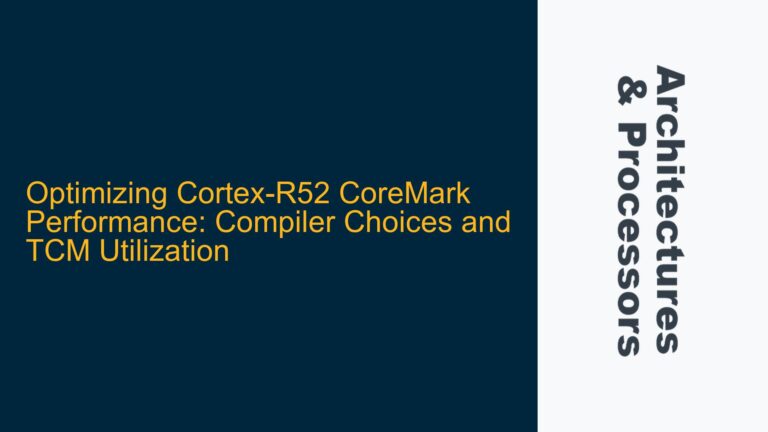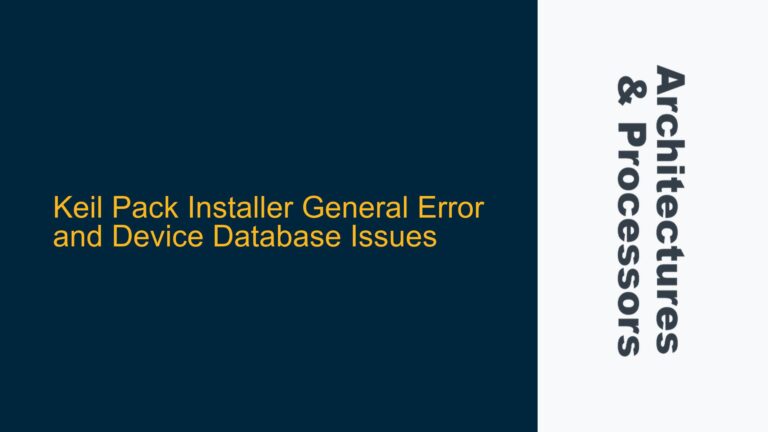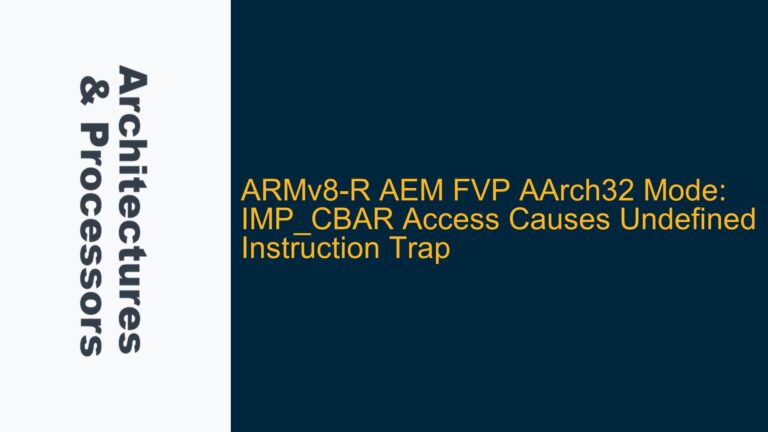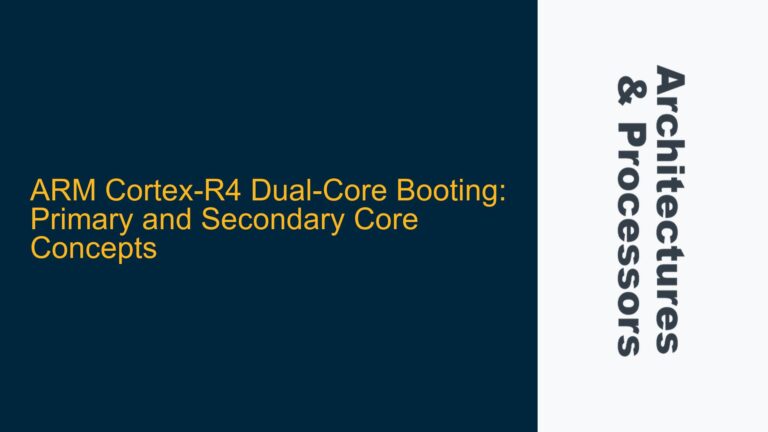Cortex-A78 and ArmRAL: Understanding the Compatibility and Performance Implications
The Cortex-A78, a high-performance processor based on the ARMv8.2-A architecture, is widely used in applications requiring significant computational power, such as SmartNICs. ArmRAL (Arm RAN Acceleration Library) is a critical tool for accelerating 5G NR signal processing workloads, leveraging vector engines like Neon, SVE, and SVE2. However, the compatibility and performance of ArmRAL on Cortex-A78, compared to Neoverse N1, raises important questions. Specifically, whether the Cortex-A78 can fully utilize ArmRAL’s capabilities without losing the performance benefits typically associated with Neoverse cores.
The Cortex-A78 and Neoverse N1 share the same ARMv8.2-A architecture, but they are optimized for different use cases. The Cortex-A78 is designed for mobile and embedded applications, while the Neoverse N1 targets infrastructure and server workloads. This difference in optimization can lead to variations in how efficiently each core executes ArmRAL functions. The primary concern is whether the Cortex-A78 can achieve the same level of performance as the Neoverse N1 when running ArmRAL, particularly in 5G NR signal processing tasks.
ArmRAL abstracts the complexity of vector programming by providing optimized building blocks for RAN L1 functions. These functions are designed to run on CPUs using SIMD (Single Instruction, Multiple Data) instructions, which are critical for accelerating signal processing workloads. The Cortex-A78 supports Neon, a widely used SIMD architecture, but lacks support for SVE (Scalable Vector Extension) and SVE2, which are available in some Neoverse cores. This limitation could impact the performance of ArmRAL on Cortex-A78, especially for workloads that benefit from SVE/SVE2 optimizations.
Neon Optimization and Architectural Differences: Key Factors Affecting ArmRAL Performance
The performance of ArmRAL on Cortex-A78 hinges on several factors, including the availability of Neon optimizations and the architectural differences between Cortex-A78 and Neoverse N1. Neon is a SIMD architecture that accelerates data-parallel tasks by processing multiple data elements in parallel. ArmRAL provides Neon-optimized versions of its functions, which should theoretically work on Cortex-A78. However, the absence of SVE/SVE2 support in Cortex-A78 means that certain optimizations available in Neoverse cores cannot be leveraged.
The Neoverse N1, being optimized for infrastructure workloads, includes features like larger caches, higher memory bandwidth, and support for SVE/SVE2. These features enable the Neoverse N1 to handle data-intensive tasks more efficiently than the Cortex-A78. For example, SVE/SVE2 allows for variable-length vector operations, which can significantly improve performance in workloads with irregular data patterns. The Cortex-A78, lacking SVE/SVE2, must rely solely on Neon, which has fixed-length vector operations. This limitation can lead to suboptimal performance in certain scenarios, particularly when dealing with complex signal processing tasks.
Another factor to consider is the multicore configuration of the Cortex-A78-based SmartNIC. ArmRAL is designed to scale across multiple cores, but the performance gains depend on how well the workload is parallelized and how efficiently the cores communicate. The Cortex-A78’s multicore architecture is optimized for power efficiency, which may result in lower peak performance compared to the Neoverse N1. Additionally, the Cortex-A78’s cache hierarchy and memory subsystem are tailored for mobile applications, which may not provide the same level of performance as the Neoverse N1’s infrastructure-focused design.
Implementing Neon-Optimized ArmRAL on Cortex-A78: Steps and Best Practices
To achieve optimal performance with ArmRAL on Cortex-A78, it is essential to follow a structured approach that includes proper configuration, benchmarking, and optimization. The first step is to ensure that the ArmRAL library is compiled with the correct flags for Neon optimization. This can be done by setting the -DARMRAL_ARCH=NEON flag during the build process. This flag instructs the compiler to generate code optimized for Neon, ensuring that the Cortex-A78 can fully utilize its SIMD capabilities.
Once the library is compiled, the next step is to benchmark the performance of ArmRAL on the Cortex-A78-based SmartNIC. This involves running a series of tests to measure the throughput, latency, and resource utilization of the ArmRAL functions. The results should be compared against the performance of the same functions on a Neoverse N1-based system to identify any discrepancies. If the performance on Cortex-A78 is significantly lower, it may be necessary to investigate further and optimize the code.
One potential area for optimization is the memory access patterns. The Cortex-A78’s cache hierarchy is optimized for mobile workloads, which may not align perfectly with the data access patterns of ArmRAL functions. By analyzing the memory access patterns and restructuring the code to minimize cache misses, it may be possible to improve performance. Additionally, leveraging the Cortex-A78’s out-of-order execution capabilities can help mitigate the impact of memory latency.
Another important consideration is the multicore scalability of ArmRAL on Cortex-A78. To achieve optimal performance, the workload should be evenly distributed across all available cores. This can be done by using parallel programming techniques such as OpenMP or pthreads. Additionally, ensuring that the cores are properly synchronized and that there is minimal contention for shared resources can help improve scalability.
In conclusion, while the Cortex-A78 can run ArmRAL with Neon optimizations, achieving the same level of performance as the Neoverse N1 requires careful configuration and optimization. By following the steps outlined above, it is possible to maximize the performance of ArmRAL on Cortex-A78-based systems, even in the absence of SVE/SVE2 support. However, it is important to recognize that the architectural differences between Cortex-A78 and Neoverse N1 may result in some performance trade-offs, particularly for workloads that benefit from SVE/SVE2 optimizations.
